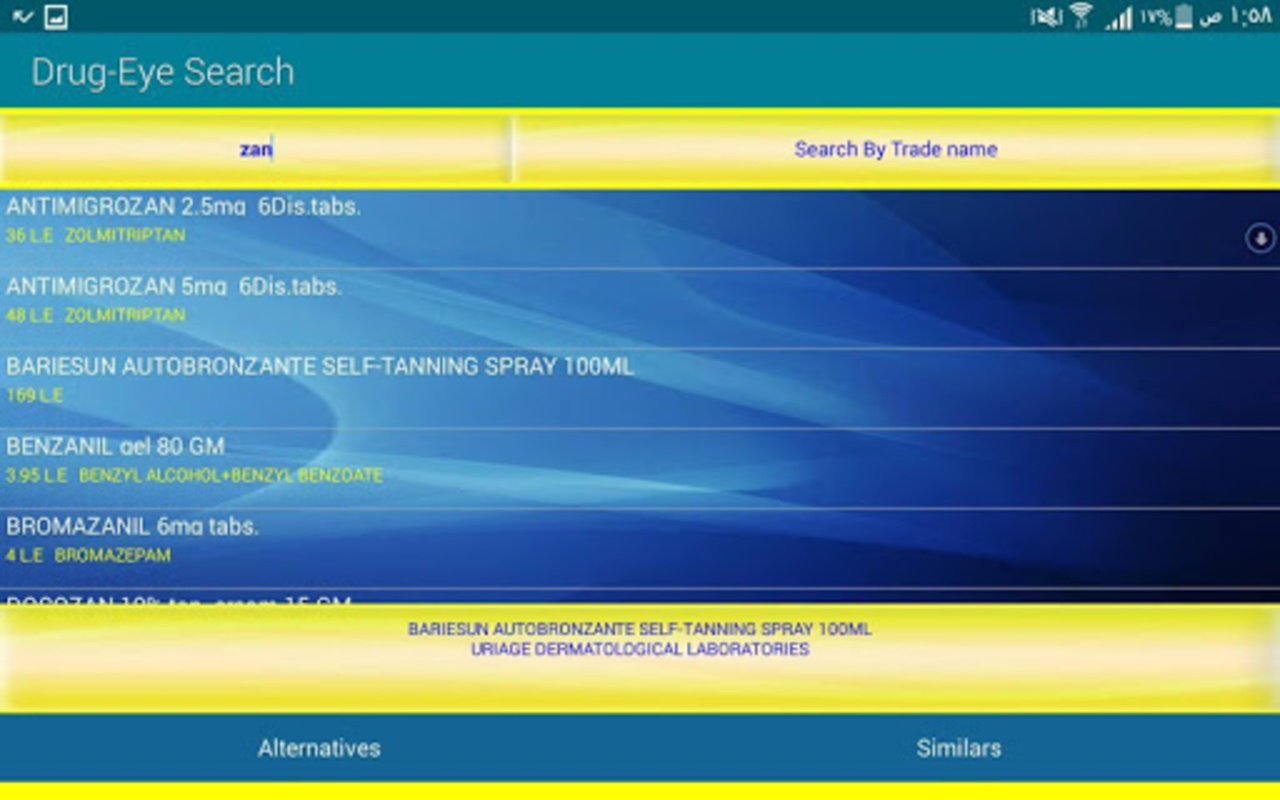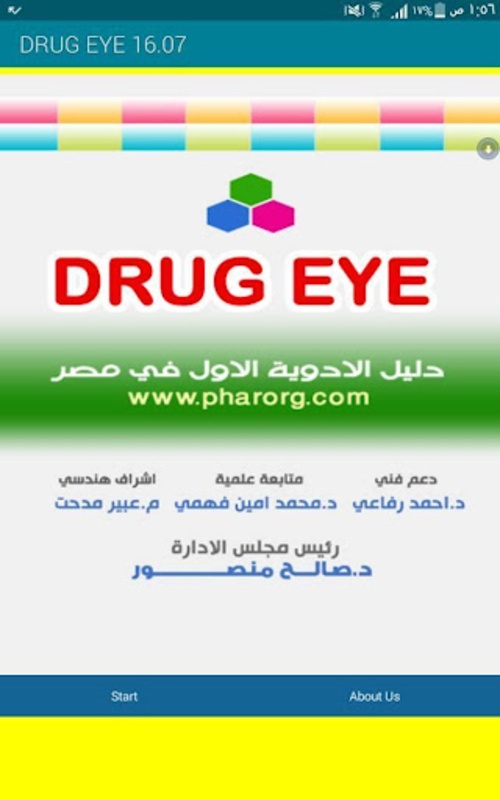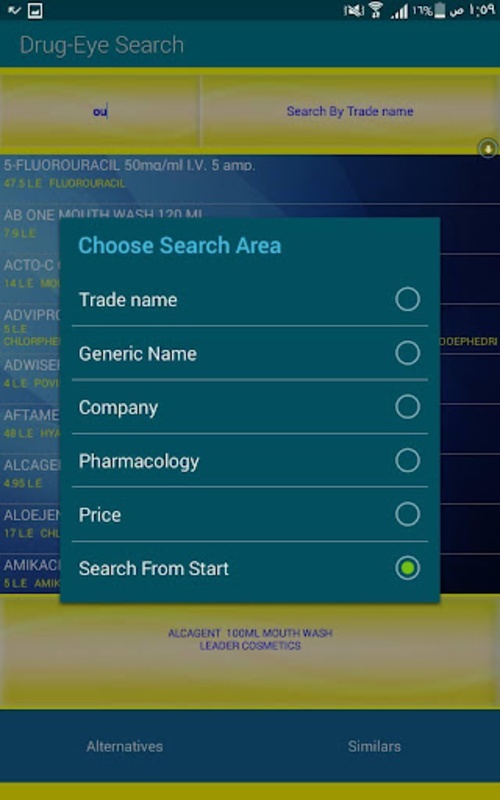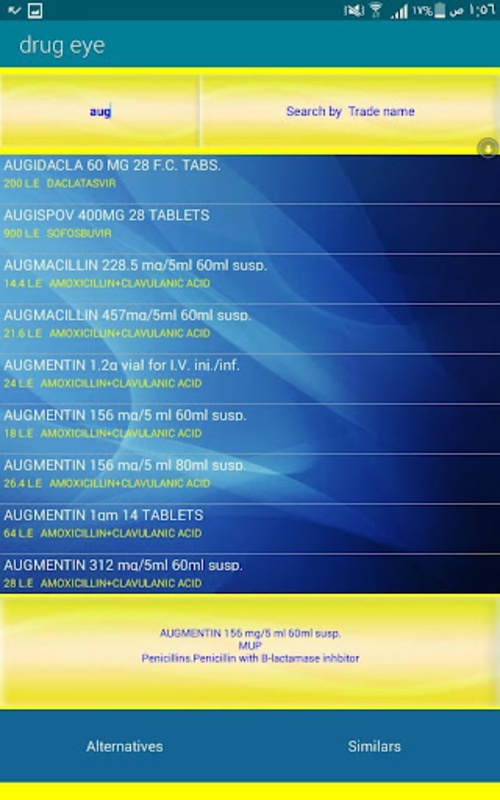The Drug Eye Index serves as a comprehensive Egyptian medicine directory, providing an extensive database where users can search for medications using various parameters such as trade name, scientific name, manufacturer, or price. Key features include a display of alternative medications, complete dosage information, and pharmacological details, which are invaluable for informed healthcare decisions. With a smart search engine that corrects writing errors—akin to the functionality seen in popular search engines—the app ensures user-friendly and accurate searches. The content is available in Arabic and includes data starting from the 2019 edition.
The platform includes an intelligent features set, designed to make the search for pharmaceutical information straightforward and efficient. By displaying alternatives, users have access to a range of options to discuss with their healthcare provider. The detailed dosage and pharmacological information can help individuals understand the medications they are considering, including potential side effects and contraindications.
Drug Eye Index
Drug Eye Index is a comprehensive database that provides information on the effects of various drugs on the eyes. It is designed to assist healthcare professionals, researchers, and the general public in understanding the potential ocular complications associated with drug use.
Content
The Drug Eye Index includes detailed information on over 1,500 drugs, including prescription medications, over-the-counter drugs, and illicit substances. For each drug, the database provides the following data:
* Generic and trade names: Identifies the drug by its official name and common brand names.
* Ocular effects: Describes the potential adverse effects of the drug on the eyes, including:
* Corneal and conjunctival changes
* Cataracts and glaucoma
* Retinal toxicity
* Optic nerve damage
* Visual disturbances
* Mechanism of action: Explains how the drug interacts with the ocular tissues to produce the observed effects.
* Risk factors: Identifies factors that may increase the risk of developing ocular complications, such as dosage, duration of use, and underlying health conditions.
* Management: Provides guidance on managing ocular complications associated with drug use, including preventive measures, monitoring strategies, and treatment options.
Usage
The Drug Eye Index is a valuable resource for:
* Healthcare professionals: Ophthalmologists, optometrists, and pharmacists can use the database to assess the potential ocular risks of medications they prescribe or dispense.
* Researchers: Scientists and researchers can use the index to investigate the ocular effects of drugs and identify potential areas for further study.
* General public: Individuals can access the database to learn about the potential ocular complications of medications they are taking or considering taking.
Accuracy and Reliability
The Drug Eye Index is maintained by a team of experts in ophthalmology, pharmacology, and toxicology. The data is continuously updated based on the latest scientific literature and clinical evidence. The index undergoes rigorous quality control measures to ensure accuracy and reliability.
Conclusion
The Drug Eye Index is an essential tool for understanding the ocular effects of drugs. It provides comprehensive and up-to-date information that helps healthcare professionals, researchers, and the general public make informed decisions about drug use and ocular health.
The Drug Eye Index serves as a comprehensive Egyptian medicine directory, providing an extensive database where users can search for medications using various parameters such as trade name, scientific name, manufacturer, or price. Key features include a display of alternative medications, complete dosage information, and pharmacological details, which are invaluable for informed healthcare decisions. With a smart search engine that corrects writing errors—akin to the functionality seen in popular search engines—the app ensures user-friendly and accurate searches. The content is available in Arabic and includes data starting from the 2019 edition.
The platform includes an intelligent features set, designed to make the search for pharmaceutical information straightforward and efficient. By displaying alternatives, users have access to a range of options to discuss with their healthcare provider. The detailed dosage and pharmacological information can help individuals understand the medications they are considering, including potential side effects and contraindications.
Drug Eye Index
Drug Eye Index is a comprehensive database that provides information on the effects of various drugs on the eyes. It is designed to assist healthcare professionals, researchers, and the general public in understanding the potential ocular complications associated with drug use.
Content
The Drug Eye Index includes detailed information on over 1,500 drugs, including prescription medications, over-the-counter drugs, and illicit substances. For each drug, the database provides the following data:
* Generic and trade names: Identifies the drug by its official name and common brand names.
* Ocular effects: Describes the potential adverse effects of the drug on the eyes, including:
* Corneal and conjunctival changes
* Cataracts and glaucoma
* Retinal toxicity
* Optic nerve damage
* Visual disturbances
* Mechanism of action: Explains how the drug interacts with the ocular tissues to produce the observed effects.
* Risk factors: Identifies factors that may increase the risk of developing ocular complications, such as dosage, duration of use, and underlying health conditions.
* Management: Provides guidance on managing ocular complications associated with drug use, including preventive measures, monitoring strategies, and treatment options.
Usage
The Drug Eye Index is a valuable resource for:
* Healthcare professionals: Ophthalmologists, optometrists, and pharmacists can use the database to assess the potential ocular risks of medications they prescribe or dispense.
* Researchers: Scientists and researchers can use the index to investigate the ocular effects of drugs and identify potential areas for further study.
* General public: Individuals can access the database to learn about the potential ocular complications of medications they are taking or considering taking.
Accuracy and Reliability
The Drug Eye Index is maintained by a team of experts in ophthalmology, pharmacology, and toxicology. The data is continuously updated based on the latest scientific literature and clinical evidence. The index undergoes rigorous quality control measures to ensure accuracy and reliability.
Conclusion
The Drug Eye Index is an essential tool for understanding the ocular effects of drugs. It provides comprehensive and up-to-date information that helps healthcare professionals, researchers, and the general public make informed decisions about drug use and ocular health.












